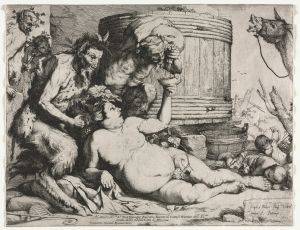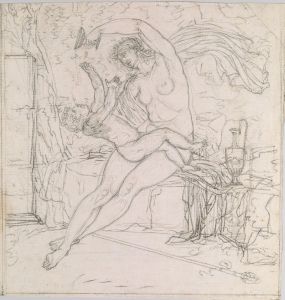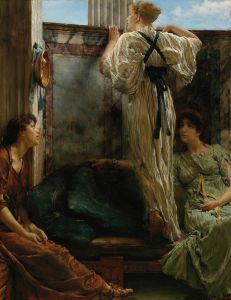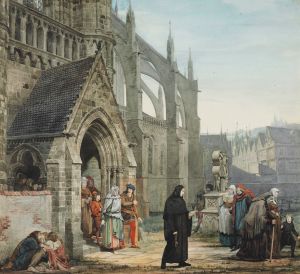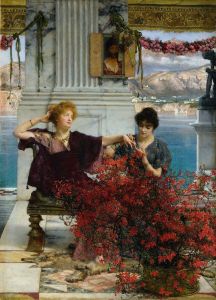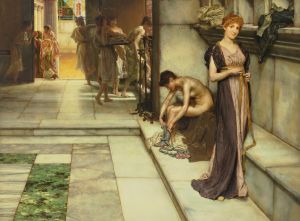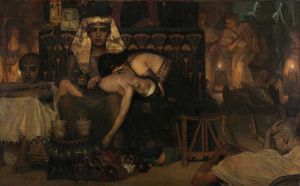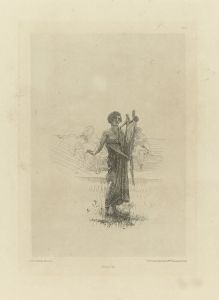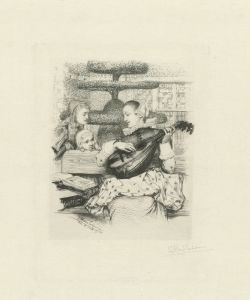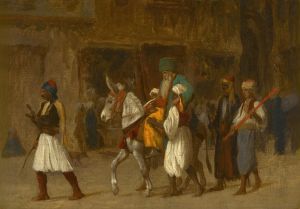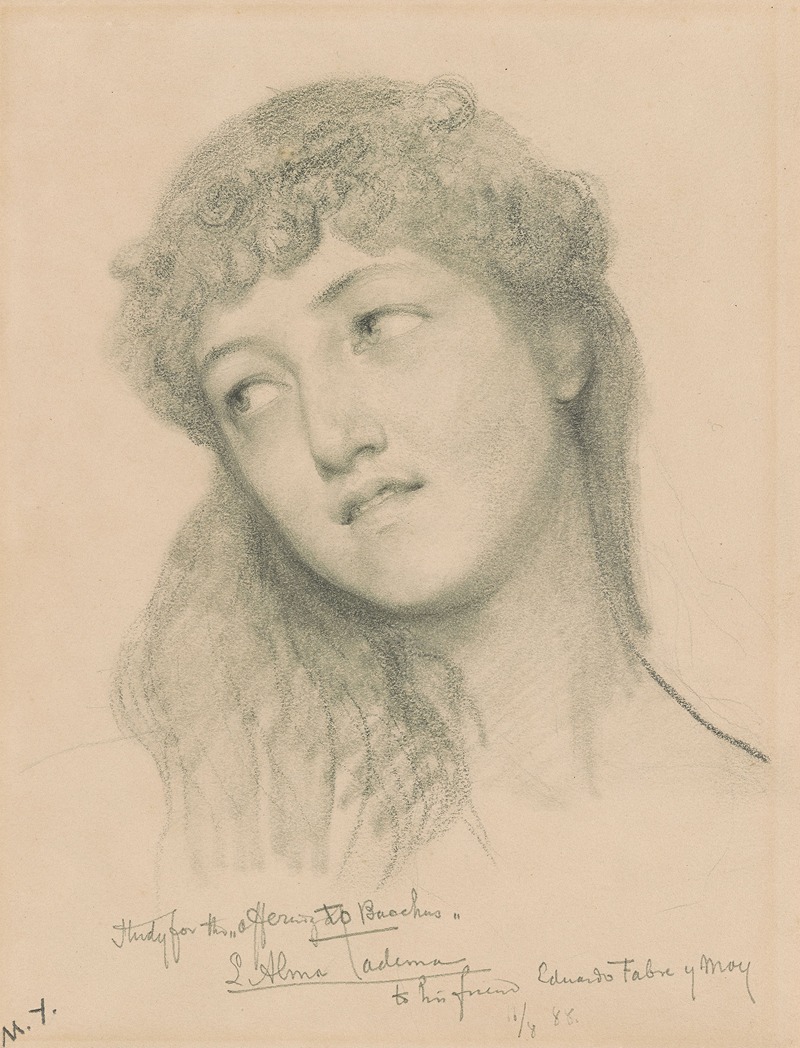
Study for the Offering to Bacchus
A hand-painted replica of Lawrence Alma-Tadema’s masterpiece Study for the Offering to Bacchus, meticulously crafted by professional artists to capture the true essence of the original. Each piece is created with museum-quality canvas and rare mineral pigments, carefully painted by experienced artists with delicate brushstrokes and rich, layered colors to perfectly recreate the texture of the original artwork. Unlike machine-printed reproductions, this hand-painted version brings the painting to life, infused with the artist’s emotions and skill in every stroke. Whether for personal collection or home decoration, it instantly elevates the artistic atmosphere of any space.
"Study for the Offering to Bacchus" is a painting by the renowned Dutch-British artist Sir Lawrence Alma-Tadema, who was known for his depictions of classical antiquity. Alma-Tadema was born on January 8, 1836, in Dronrijp, Netherlands, and later became a prominent figure in the Victorian art world after moving to England. His works are celebrated for their meticulous detail, historical accuracy, and vibrant portrayal of ancient Roman and Greek life.
"Study for the Offering to Bacchus" is a preparatory work for Alma-Tadema's larger and more elaborate painting "The Offering to Bacchus," which was completed in 1881. The study, like the final piece, reflects Alma-Tadema's fascination with ancient rituals and ceremonies. Bacchus, known as Dionysus in Greek mythology, is the god of wine, fertility, and ritual madness, and his worship often involved elaborate ceremonies and offerings.
In this study, Alma-Tadema captures a moment of devotion to Bacchus, focusing on the figures and their interactions within a classical setting. The painting features a group of individuals, likely participants in a Bacchic ritual, gathered around an altar. The figures are dressed in traditional Roman attire, and the scene is set against a backdrop of classical architecture, which Alma-Tadema meticulously researched to ensure historical accuracy.
The composition of the study highlights Alma-Tadema's skill in rendering textures and materials, from the flowing garments of the figures to the intricate details of the architectural elements. His use of light and shadow adds depth and realism to the scene, drawing the viewer into the ancient world he so vividly recreates.
Alma-Tadema's attention to detail and his ability to bring historical scenes to life earned him great acclaim during his lifetime. He was knighted by Queen Victoria in 1899, becoming Sir Lawrence Alma-Tadema. His works were highly sought after by collectors and continue to be admired for their beauty and historical significance.
"Study for the Offering to Bacchus" serves as an excellent example of Alma-Tadema's preparatory process, showcasing his ability to plan and execute complex compositions. It provides insight into his artistic methods and his dedication to creating historically accurate and visually captivating works of art.
Today, Alma-Tadema's paintings, including "Study for the Offering to Bacchus," are held in high regard by art historians and collectors. They are featured in major museums and private collections around the world, where they continue to be appreciated for their artistic merit and their window into the ancient past.
In summary, "Study for the Offering to Bacchus" by Lawrence Alma-Tadema is a preparatory painting that exemplifies the artist's dedication to historical accuracy and his skill in depicting scenes from classical antiquity. It is a testament to his meticulous research and his ability to bring the ancient world to life through his art.





